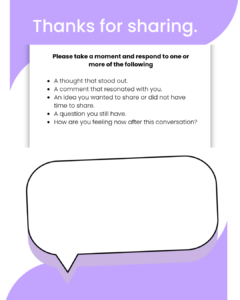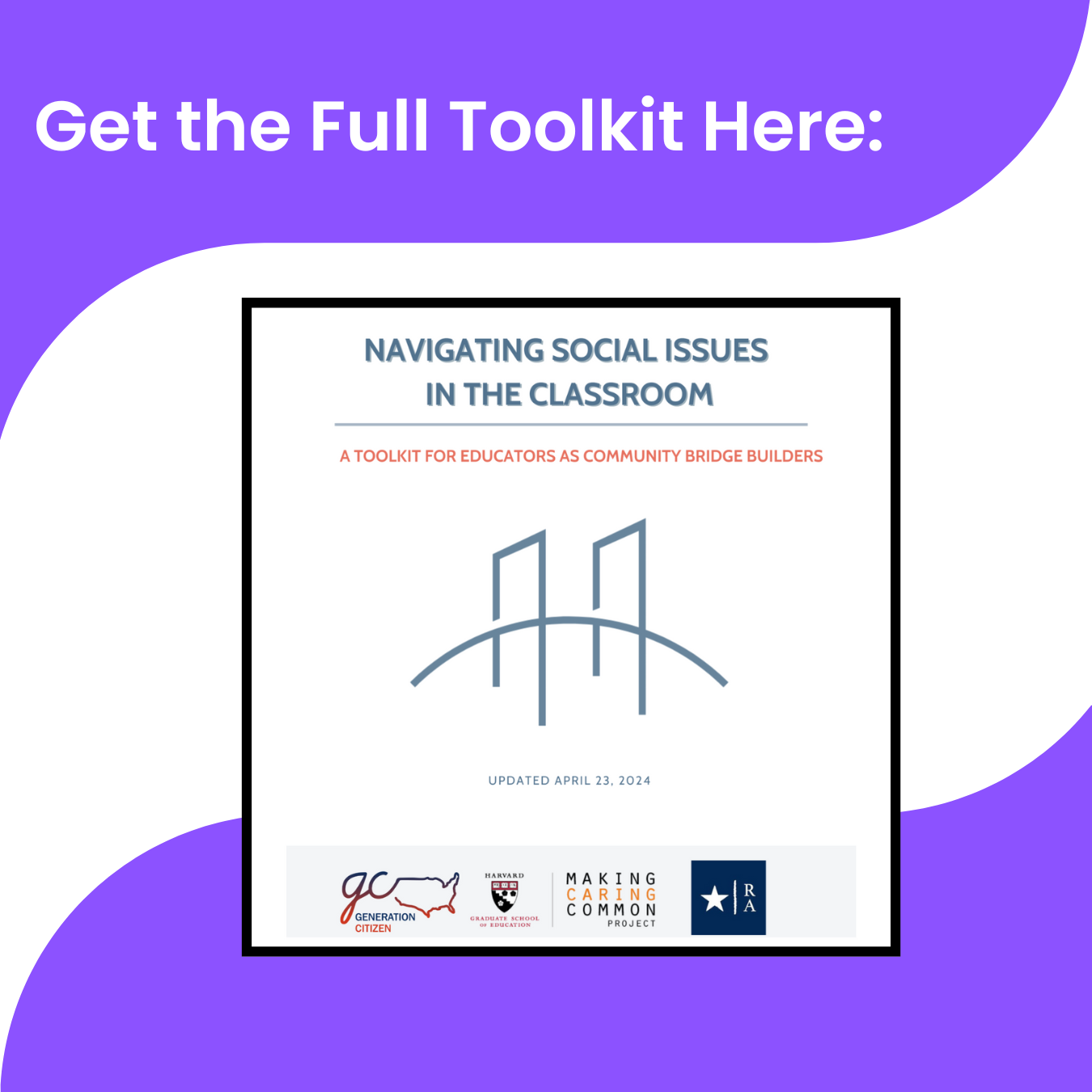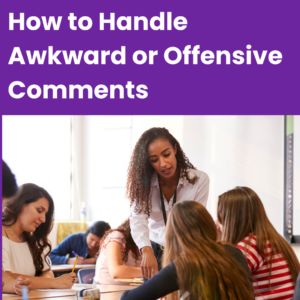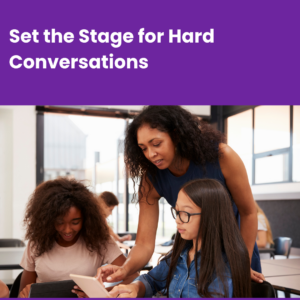
How to Handle Awkward or Offensive Comments
June 18, 20255 Steps to Keep a Surprise Conversation on Track
When surprise conversations arise—whether triggered by a national tragedy, a local event, or emotions surfacing in class—it’s important to acknowledge them thoughtfully.
These steps can help educators respond with care while managing time and classroom structure.

Step 1: Notice and Name the Shift
Pay attention to changes in the room—silence, unease, distracted energy, or student remarks that signal something is weighing on the class.
Say something simple and honest:
“I want to acknowledge what happened today. What happened today can be difficult to make sense of. ”
Step 2: Offer Space Intentionally
Let students know this is a moment that matters, even if it wasn't in the lesson plan.
This balance respects your instructional goals and your students' emotional needs.
Try saying something like:
"This wasn't what we had scheduled, but it matters that we talk about it."
Set a clear time frame if needed.(e.g., "Let's set 15 minutes and give this moment its moment.)
And mention that you can return to the lesson later.
Step 3: Guide the Tone of the Conversation
Set the expectation that this space is rooted in care, perspective taking, and respectful listening.
Reinforce your class's discussion agreements, or establish a few ground rules on the spot.
Try saying something like:
“There’s no pressure to share, but if you do, speak from your own experience and listen thoughtfully."
These framing choices teach students how to hold complex civic conversations with dignity and compassion.
Step 4: Reflect and Transition
Invite a quiet moment of reflection before continuing with your lesson. Students can respond privately or share. Below is a short exit card you can use to help guide the reflection process.
Try saying something like:
"Thanks for all of our comments and thoughts. This is a tough one but I think we did a good job. Let's take a moment and please provide me with a piece of feedback about this conversation."
This provides a moment of emotional closure while keeping the door open for deeper inquiry and gives you the teacher a pulse on how the classroom may be handling the information.
Step 5: Express Gratitude and Reframe
Acknowledge the value of what was shared:
Say something like:
“Thank you for your honesty and for being present with each other. These conversations aren’t easy, but they matter.”
Signal the transition clearly:
“We’re going to shift back to today’s lesson now. If it feels right, we can revisit this tomorrow or find another space for it.”
This approach validates the experience, offers a quiet form of expression for all students (especially those who may not have spoken), and models how to respectfully move between emotional and academic spaces.
It’s important — and okay — to say no, at least initially.
There will be times when students want to engage in a conversation about something that’s happened or been said, but as the teacher, there may be other factors at play that won’t allow an immediate pause in class to change direction and address the topic. You could feel too close to the topic, overwhelmed, or simply unprepared to have the conversation due to time factors. AND that is Ok! This is a powerful opportunity to model emotional and academic regulation.
Say something like:
“I don’t have all the answers right now, nor will I, but I do think this is important and I want us to talk about this as a class. Today, though, I feel a little too close to it and I want to give it the time and care it deserves, so we’ll set aside time tomorrow when there’s been a little space here.
Transition:
“For now, we’re going to continue with today’s lesson, but I appreciate you bringing it up. We will revisit it tomorrow.
Just be sure that you address it in the next class and use the above steps to guide your conversation.
This resource was developed in collaboration with Making Caring Common, an initiative of the Harvard Graduate School of Education dedicated to helping schools build cultures of empathy, inclusion, and moral courage. It draws from Navigating Social Issues in the Classroom: A Toolkit for Educators as Community Bridge Builders, a resource created to help teachers facilitate meaningful, respectful dialogue across differences. Together, we aim to bring practical strategies into classrooms that support connection, reflection, and a strong sense of belonging.





